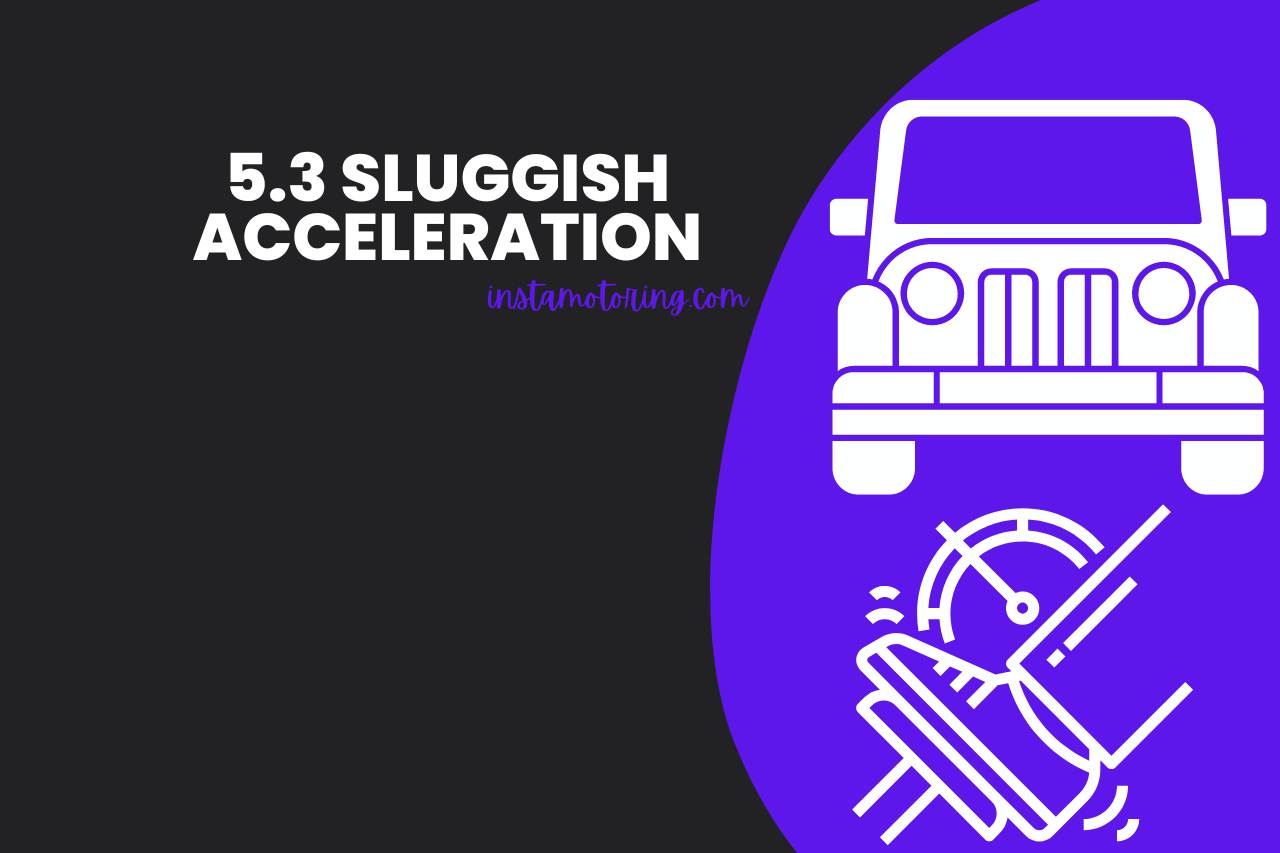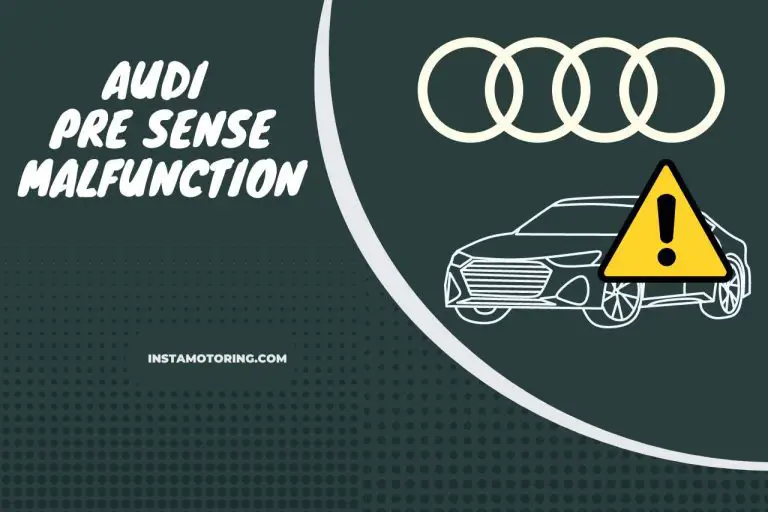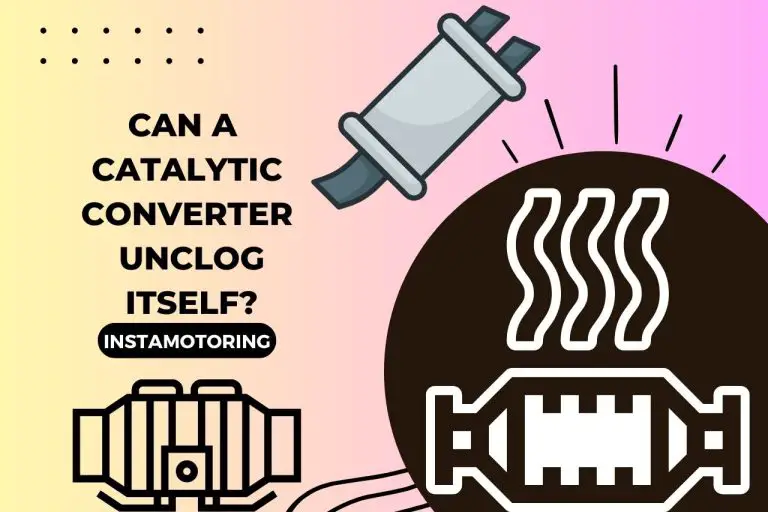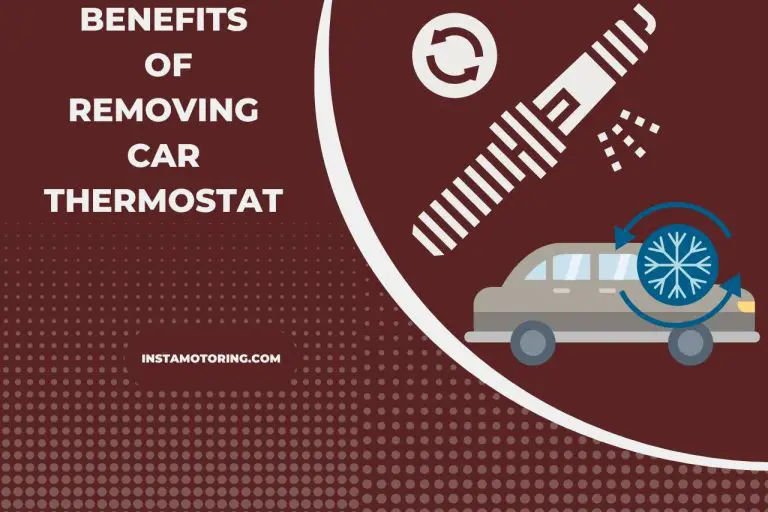5.3 Sluggish Acceleration – Understanding Fuel & Air Systems!
If you’ve ever felt your car moving slowly, you’ve come to the perfect place, leaving you annoyed and perplexed. As we explore the complexities of this puzzling phenomenon, buckle up. We’re here to arm you with the information to reenergize your driving experience, from pinpointing the root problems that slow down the response of your car to examining tried-and-true tactics and professional insights. This article is your pit crew, ready to lead you through the twists and turns of 5.3 slow acceleration, whether you are an experienced wrench turner or a novice. Here is where the journey to a smoother, more thrilling ride begins. Let’s press the gas and put sluggishness in the rearview.
What Causes Sluggish Acceleration in a 5.3 Engine?
Several things may cause a 5.3 engine’s slow acceleration. Fuel delivery problems, like a clogged fuel filter or broken fuel injectors, are frequently one of the leading causes since they make it difficult for the engine to get enough fuel.
Furthermore, an ineffective air intake system, such as clogged air filters or a broken mass airflow sensor, might impair the air-fuel mixture necessary for effective combustion.
Ignition system issues like old spark plugs or a defective ignition coil also hamper proper discharge and power production. Lastly, problems with the electronic control module (ECM) or sensor issues, such as a broken throttle position sensor, might impair the engine’s responsiveness.
With expert advice, appropriate maintenance, and identification of these possible offenders, the engine’s performance can be recovered, and the thrill of acceleration can be reinstated.
Is Poor Fuel Quality Affecting 5.3 Acceleration?
Poor fuel quality might impact a 5.3 engine’s ability to accelerate. Machines, like the 5.3, depend on a precise ratio of fuel to air for the best combustion and production of power.
Low-quality or contaminated gasoline can upset this delicate balance, resulting in incomplete combustion and decreased engine performance.
Engine knocking or pre-ignition, which have a detrimental effect on acceleration and overall performance, can be brought on by poor fuel quality, which may contain contaminants, additives, or fuel with a lower octane rating than recommended.
These problems can cause the engine to accumulate carbon over time, reducing responsiveness even more. High-quality gasoline that complies with manufacturer requirements is essential for ensuring smooth acceleration and engine health.
Regular maintenance schedules should also be followed to solve any fuel-related issues as soon as they arise.
How does Air Intake Impact Acceleration in a 5.3 Engine?
A 5.3 engine’s air intake system determines how quickly it accelerates. An efficient air intake system guarantees a constant, ideal airflow to the engine, which is necessary for effective combustion. Air is brought in, interacting with fuel to create an explosion, which produces power.
The engine’s ability to receive the needed amount of air is hampered if the air intake system is damaged because of a clogged or dirty air filter, a broken mass airflow sensor, or obstructions in the intake ducts.
This may lead to an unbalanced air-fuel combination, resulting in incomplete combustion and lower acceleration power.
A properly maintained air intake system ensures the engine gets the proper air, enabling more effective bursts and smoother acceleration.
The air intake components must be regularly inspected, cleaned, and maintained to maintain the engine’s performance and responsiveness.
Are Ignition System Issues Responsible for Sluggish Acceleration?
Undoubtedly, problems with the ignition system can significantly contribute to sluggish acceleration in a car, even with a 5.3 engine.
The ignition system produces the spark that ignites the air-fuel mixture in the engine’s cylinders. Weak or inconsistent sparks can occur during combustion if ignition system components such as spark plugs, ignition coils, or spark plug wires are worn, damaged, or malfunctioning.
As a result, the air-fuel mixture burns inefficiently, producing less power and, ultimately, sluggish acceleration. The timely release of energy required for rapid acceleration is hampered when the engine struggles to ignite the mixture effectively.
Regular maintenance and early replacement of ignition components are crucial to ensure a strong and constant spark, which enables the engine to run effectively and give the snappy acceleration expected from a 5.3 engine.
Can Exhaust System Problems Contribute to Slow 5.3 Acceleration?
Problems with the exhaust system might make a 5.3 engine accelerate slowly. The exhaust system is essential in releasing the gases created during combustion so that new air and fuel can be injected into the cylinders for the subsequent cycle.
The engine’s capacity to effectively discharge exhaust gases is impaired if there are impediments, such as a blocked catalytic converter or a constrained exhaust pipe.
This causes the back pressure in the exhaust system to rise, which hinders the engine’s ability to release gases.
The end results are reduced engine efficiency, less efficient combustion, and eventually decreased acceleration capability.
To retain the 5.3 engine’s capacity to offer smooth and quick acceleration, it is crucial to address exhaust system issues as soon as possible, whether through repairs or component replacements.
Is 5.3 Engine Timing to blame for Sluggish Acceleration?
Sluggish acceleration in a 5.3 engine can be significantly influenced by the timing of the engine’s ignition and valve events.
The machine’s timing, which controls when the spark plugs ignite and when the valves open and close, must be perfectly adjusted for optimum performance.
The combustion process can be improved if the timing is correct because of a misaligned timing chain or belt, a broken crankshaft position sensor, or a faulty adjustment.
As a result, there is ineffective power output, limited torque, and, eventually, slow acceleration. Precise timing is essential to synchronize the engine’s internal operations and ensure that each cylinder ignites at the ideal time for optimal power output.
If timing is the cause of the slow acceleration, correcting the timing through diagnostics and modifications can assist in improving the responsiveness and general performance of the engine.



Is Transmission a Factor in 5.3 Sluggish Acceleration?
The transmission may cause a 5.3 engine-equipped vehicle’s sluggish acceleration. For adequate acceleration, the information must function properly as it transfers power from the engine to the wheels.
Power loss and a slow response during acceleration can be caused by problems with the transmission, such as a slipping clutch (in manual transmissions) or a broken torque converter (in automatic transmissions).
Additionally, it may be difficult for the engine to quickly enter its ideal power band if the message is not moving smoothly or is locked in higher gear.
Routine maintenance is essential to guarantee seamless gear shifts and maximize the engine’s acceleration potential in a 5.3 engine.
This includes fluid checks and changes and rapid attention to transmission-related issues.
Tunning and Performance Upgrade: Enhancing 5.3 Acceleration
A 5.3 engine’s acceleration can be dynamically improved by tuning and performance enhancements, maximizing its potential.
Tuning enhances the engine’s performance by calibrating the engine control unit (ECU) and modifying elements, including fuel delivery, ignition timing, and air-to-fuel ratio.
Additionally, incorporating performance-improving parts like high-flow air intakes, exhaust systems, and aftermarket headers can increase airflow and decrease back pressure, enabling more effective combustion and power delivery.
Switching to high-performance spark plugs, ignition coils, and tuning software can also improve power output.
Together, these changes increase horsepower, torque, and throttle response, transforming the acceleration experience and maximizing the potential of the 5.3 engine.
To experience the benefits of reinvigorated and exhilarating driving performance, it’s crucial to carry out these upgrades with careful attention, assuring compatibility and competent installation.
Regular Maintenance Practices to Prevent 5,3 Acceleration Problems
Preventing acceleration issues with a 5.3 engine primarily depends on routine maintenance procedures.
- To guarantee optimum engine performance and combustion efficiency, regular attention should be paid to the recommended oil changes, air filter replacements, and fuel system cleanings.
- A vital spark is maintained for adequate acceleration by timely inspection and replacement of spark plugs, ignition coils, and other components.
- Regular gearbox fluid checks and replacements, good tire maintenance, and alignment aid smooth wheel power distribution.
- Additionally, following the guidelines for exhaust systems, sensors, and general engine health maintenance helps prevent problems that impede acceleration.
- Drivers may maintain the integrity of their 5.3 engine, maintaining its responsiveness and supplying a fluid acceleration experience, by prioritizing these maintenance activities.
Watch this one,
Video Credits – The Clay Way
You May Also Like



My name is James, I work as an Automotive Designer with 9 years of experience. I also work as a mechanic and vehicle inspector. I love deciphering complicated car exteriors and interiors and resolving fluid and oil troubles. InstaMotoring.com is here to help you troubleshoot your car with dependable and expert help.







